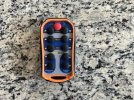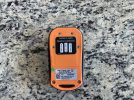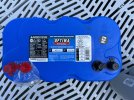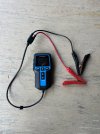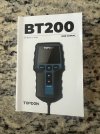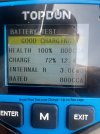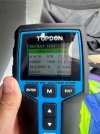Vikingstaff
Moderator
I had 2 big components of my 5 year old Sea Legs system fail this year coming out of winter storage. Main motor and remote control box/remote system. The main motor was somewhat reasonable price range, but the remote system was VERY expensive in my mind for what it is.
I spoke at length directly with Sea Legs today about my concerns over these parts failures after only 5 years and 12 combined months of useage total (and high combined repair costs). Learned something new to pass along to others in regards to the main motor on the system.
Sea Legs said the system requires a battery with a MINIMUM of 850 CCA, deep cycle. However, they recommend one with 1000 CCA, and that 1000 CCA is what they personally in fact have on their own boats with Sea Legs. They say they stress this in all their literature and with install dealerships.
My current batteries were new in 2022, and register fine in terms of volts on my dash. They were put on by and at the direction of my purchase and Sea Legs install dealership. However, in talking with Sea Legs directly I went out to the boat to go over my Sea Legs connected battery (battery #2, non-starter battery, on my boat) while I was on the phone with them. My secondary battery is a 750 CCA.
The Sea Legs rep said he is 100% sure that my battery is what caused my motor to burn out. He said it doesn’t have the juice to fully power Sea Legs properly during operation, and the motor is overworking and overheating. He said over time it surely burned through internal wiring in the Sea Legs motor. He advised immediately upgrading my second battery (that the Sea Legs is connected to) to one with more CCA.
So, #1, I want to pass this battery info along to all other Sea Legs owners. Check your batteries now. FWIW: The motor itself is about $500, plus tech travel service charge, diagnostic service charge and labor time. Protect your system by having a properly rated battery.
I’ll discuss my battery situation separately with my dealership and see why they recommended what I have in light of the above. Regardless, I will be upgrading my secondary battery somewhat asap to meet the recommendations for my Sea Legs.
As for my remote system, which was double the motor repair/replacement, they had no answer. They said it’s typically a reliable system, and doesn’t fail often. However, the replacement system and new remote are different. They said they are a new and improved version, and should work flawlessly for years to come. They said they are much more robust, particularly the actual remote. In only 1 week of usage, I can verify better reception, quicker reception, quicker responsiveness. I have not tested for longer range, but I will soon.
Still love my Sea Legs, even though these premature repairs rattle me a little bit. However, for fellow Sea Legs owners, check your Sea Legs connected battery. Having the right CCA could save you some costly repairs.
I spoke at length directly with Sea Legs today about my concerns over these parts failures after only 5 years and 12 combined months of useage total (and high combined repair costs). Learned something new to pass along to others in regards to the main motor on the system.
Sea Legs said the system requires a battery with a MINIMUM of 850 CCA, deep cycle. However, they recommend one with 1000 CCA, and that 1000 CCA is what they personally in fact have on their own boats with Sea Legs. They say they stress this in all their literature and with install dealerships.
My current batteries were new in 2022, and register fine in terms of volts on my dash. They were put on by and at the direction of my purchase and Sea Legs install dealership. However, in talking with Sea Legs directly I went out to the boat to go over my Sea Legs connected battery (battery #2, non-starter battery, on my boat) while I was on the phone with them. My secondary battery is a 750 CCA.
The Sea Legs rep said he is 100% sure that my battery is what caused my motor to burn out. He said it doesn’t have the juice to fully power Sea Legs properly during operation, and the motor is overworking and overheating. He said over time it surely burned through internal wiring in the Sea Legs motor. He advised immediately upgrading my second battery (that the Sea Legs is connected to) to one with more CCA.
So, #1, I want to pass this battery info along to all other Sea Legs owners. Check your batteries now. FWIW: The motor itself is about $500, plus tech travel service charge, diagnostic service charge and labor time. Protect your system by having a properly rated battery.
I’ll discuss my battery situation separately with my dealership and see why they recommended what I have in light of the above. Regardless, I will be upgrading my secondary battery somewhat asap to meet the recommendations for my Sea Legs.
As for my remote system, which was double the motor repair/replacement, they had no answer. They said it’s typically a reliable system, and doesn’t fail often. However, the replacement system and new remote are different. They said they are a new and improved version, and should work flawlessly for years to come. They said they are much more robust, particularly the actual remote. In only 1 week of usage, I can verify better reception, quicker reception, quicker responsiveness. I have not tested for longer range, but I will soon.
Still love my Sea Legs, even though these premature repairs rattle me a little bit. However, for fellow Sea Legs owners, check your Sea Legs connected battery. Having the right CCA could save you some costly repairs.
Last edited:

